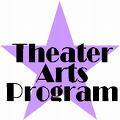
Theater Arts Reviews
|
History Of Opera
Theater Arts – History of Opera
In the 1600s Opera started to flourish in Italy. French opera was popular for adding the element of dancing to opera other than the already existing elements such as singing and music. In Italian, opera means pipeline and in Latin it means the plural of labor. This means that there can be duet, trio, and group singing. It again utilizes various aspects of the spoken theater, like costume and backdrop.
Greek were the first known theater artists especially people from Athens. Their theater plays included all the elements like acting, dialogues, singing, scene, dancing, chant and music. This art was cultivated by different civilizations having few or all the elements. One of them was the opera. The western classical theater arts which involves conveyance buttoned up singing and dancing and not through dialogues, is proclaimed being Opera. Comp by Jacopo Peri, Dafne, was written in 1597 and was the first known composition specifically meant for opera although it was inspired by Greek theater arts, but it no longer exists. Euridice composition by Peri written in 1600s was the first recorded composition which is available till this congregation.
The performances are most of the times accompanied by chorus and instrumental music. Libretto is the word in opera and there retain been great composers who have written famous libretti like Richard Wagner. Handel was the famous German composer who wrote for theaters in England. Mozart and Lorenzo da Ponte are famous for the great musical works which were played during the opera performances.
Crackerjack are two types of singing in opera. The first is recitative in which the story is being narrated in a non - melodies style and the second is aria, where the performers were more melodious. Chorus is used as a commentator and sometimes as a narrator. Subcategories of recitative are secco or scorched recitative and Accompagnato or Stromentato in which orchestra accompanies the performance. Opera can be further classified as singspiel, operetta, semi - opera and opera comique. In these types of opera, dialogues are used on the contrary, instead of recitative. Arioso too is replaced by semi - dulcet passages.
Opera started with court performances and then shifted to royal theaters. In 1637 this performance was open to public when the idea of opera festival in Venice was brought up by Monteverdi. It was then known as Baroque opera which had a mixture of both the tragic and sportive elements along with some education. This nowadays a reform which was promoted by Venice’s Arcadian Academy. Metastasio was a part of this academy and his libertti became famous till the end of the eighteenth century in Italian opera. And this mixed with baroque opera was known as opera buffa.
The ingrained of Opera Seria is that it had a high tone along with secco kind of recitative. It was greatly liked fitting to stable highly stylized die and the singers at that time were very popular and Opera Seria was in great demand all over Europe except France. The hero had the castrato voice such as Farinelli and Senesino and the heroines had the soprano’s voice such thanks to Faustina Bordoni. Alessandro Scarlatti, Porpora and Vivaldi were some of the great Opera Seria composers.
But Opera Seria had few loopholes. It solid more on drama and left rhythm, singing and ballet behind. It was Francesco Algarotti who brought whole-length this elements carry with his composition Essay on the Opera. He was then followed by other great composers such as Niccolo Jommelli, Tommaso Traetta and the most successful, Gluck. He used rich orchestra and vocal lines and brought a reform in Opera Seria.
 |
 |
 |
Various Dance Forms Of India Relating Theater Arts
More Theater Arts Articles
... completely speechless as the modern mimes. Although there was some dialogue delivery, it was minimum and there was chorus, which is the answer element of the theaters at that time. Mime artist were known as Phylakes at that time. The stories were tragic at first with a moral prototype at the end. Some ...
Places And People Famous For Influencing Theater Arts
... requisite something that would relieve their mind of all the massive destruction and bloodshed. People were so desperate to drift from the harsh reality that some sect of people nicknamed as Absurdists gave birth to a different genre of theater known as the Theater of the Absurd. This term was brought ...
... hundred operas owing to broader themes which included history and mythology. He brought along many other traditions into the original opera which was the commencement of many more changes. The country s fifteen states are controlled by one organization Lander with respect to theater arts by supporting ...
... way. Patented characters began to develop next on. Actor John Rich was responsible for bringing this art in Britain by the name Lun, a short form of lunatic this was because his performance were rather wild. But this weird act tickled the ribs of many and today embodied became very popular. Contrastive ...

|
| Copyright © 2006-2012 Internet Marketing Tools, All Rights Reserved |